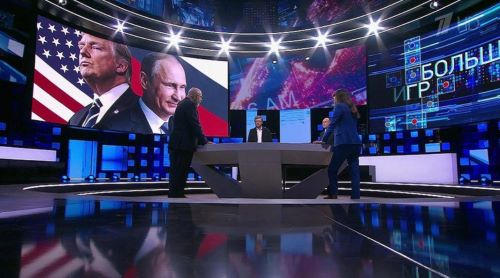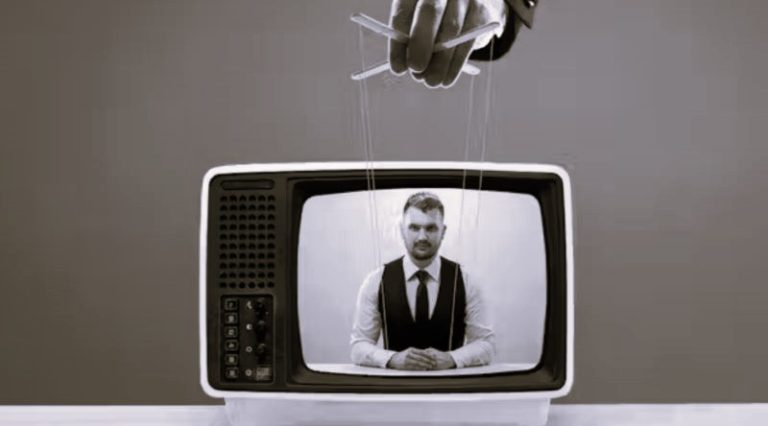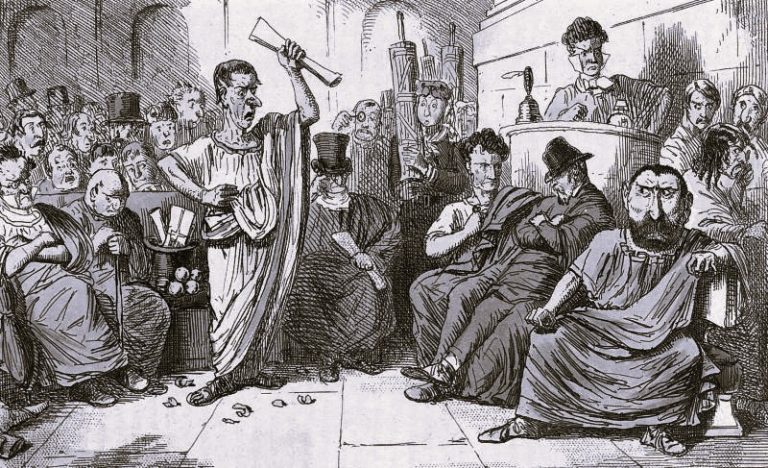

Current and former employees describe Russian state television as an army.

By Masha Gessen
Staff Writer
The New Yorker
Six nights a week, Vladimir Solovyov, one of the dominant voices in Russian propaganda, gathers a half-dozen pundits for more than two hours of what appears to be unscripted political crosstalk. Most recent episodes have been devoted to mocking Ukraine and its allies—especially the United States and President Biden—and debating Russia’s options. “Should we just turn the world to dust?” Solovyov asked during his show on April 29th. His guests—seven middle-aged men—laughed heartily. Later, Solovyov grew sombre. “I’d like to remind the West of two statements of historic significance,” he said. “The President of the Russian Federation has asked, ‘What is the point of a world in which there is no Russia?’ ” This is a quote from an interview Solovyov himself conducted with Vladimir Putin, in 2018, in which Putin responded to a question about the possibility of a nuclear war. The second statement Solovyov quoted was also from Putin in 2018: “If they start a nuclear war, we will respond. But we, being righteous people, will go straight to Heaven, while they will just croak.” Solovyov quotes this one a lot, sometimes as a sort of call-and-response with his guests.
All broadcast television in Russia is either owned or controlled by the state. The main evening newscasts on the two main state channels, Channel One and Russia One, cover more or less the same stories, in more or less the same order. On April 30th, for example, Channel One led with a report from a village recently “liberated from the neo-Nazis”; Russia One began its newscast with a general update on the gains made by Russian troops—“Hundreds of neo-Nazis liquidated, tens of airborne targets hit, and several hits against command centers and equipment stockpiles.” Both newscasts reported on atrocities ostensibly committed by Ukrainian troops. “The Ukrainian Army once more bombed civilian targets,” Russia One claimed. Channel One carried a detailed confession supposedly made by a Ukrainian prisoner of war, who said that he had raped a Russian woman and murdered her husband. Both channels carried reports from a military hospital where a group of young men in identical striped pajamas received medals for their heroic roles in “liberating” Ukrainian towns and villages.
Coverage is repetitive not just from day to day, television channel to television channel; nearly identical stories appear in print and online media, too. According to a number of current and former employees at Russian news outlets, there is a simple explanation for this: at weekly meetings with Kremlin officials, editors of state-controlled media, including broadcasters and publishers, coördinate topics and talking points. Five days a week, a state-controlled consultancy issues a more detailed list of topics. (The organization did not respond to a request for comment.) I have not seen these lists myself—individuals with access to them said that they were too scared of being prosecuted under new espionage laws to share them—but they agreed to analyze the lists during the course of a couple of weeks. They said that the lists generally contained six to ten topics a day, which appear designed to supplement the Ministry of Defense’s war updates that constitute mandatory coverage. Those among my sources who have seen these lists work for non-broadcast media, but the talking points they described invariably appeared in the news lineups on Channel One and Russia One.
READ ENTIRE ARTICLE AT THE NEW YORKER


